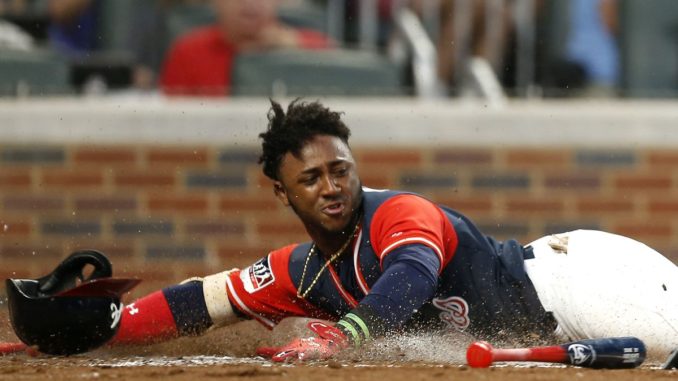
ALSO IN THIS SERIES:
First Base
Third Base
Shortstop
Catcher
Left Field
The loss of the 13 international prospects in the wake of the Coppolella/Blakeley bundling scandal had it’s most dramatic impact on the depth charts for the middle infield positions. What’s left over is a little less than exciting, but fortunately 2017 saw the debut of Ozzie Albies, one of the most dynamic players and personalities the Braves minor leagues have produced in several years, and a talent under team control for at least the next six seasons.
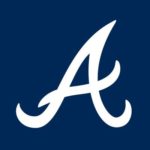 ATLANTA BRAVES
ATLANTA BRAVES
STARTER: Ozzie Albies
Up front, it should be acknowledged that the Braves are reportedly at least considering flip-flopping their middle infielders, moving Dansby Swanson to second base and Ozzie Albies to shortstop. It’s been no secret that there is a difference of opinion, even within the Braves front office at the time of Swanson’s promotion to the majors in August 2016, about which infielder would be better served at which position. For the purposes of this summary, I am assuming Albies will stay at second base, but fans should be aware that a switch is certainly possible. For what it’s worth, recent comments by GM Alex Anthopoulos indicated that the plan for now is to keep Albies at second.
Albies made his major league debut on August 1, and the team and fans couldn’t ask for much more from the player who had been a top prospect over the prior three seasons. Albies batted .286/.354/.456 through the final 57 games of the major league season, stealing 8 bases and swatting 6 homers in the process. That small sample accumulated 1.4 bWAR, and that somewhat meager total is the highest by a Braves second baseman since Dan Uggla‘s 2012 campaign. It’s always difficult to say what rookies will produce in their first year, but Albies has a chance to make a significant impact on the team in 2018.
BACK-UP: Charlie Culberson
The Matt Kemp trade brought back a couple of players who should find themselves on the major league roster. Rome, Georgia native Charlie Culberson won’t turn heads with his .231/.272/.324 career batting line, but he rates as an above average defender at all three infield skill positions. Unless the Braves make a move before the season starts to bring in a starting third baseman, pushing Johan Camargo to a utility infielder role, Culberson is the most likely back-up in the infield.
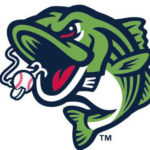 GWINNETT STRIPERS (CLASS AAA)
GWINNETT STRIPERS (CLASS AAA)
STARTER: Christian Colon
Colon was the 4th pick overall in the 2010 draft by Kansas City after a terrific college career at Cal State-Fullerton. He was ranked by Baseball America as a top 25 prospect in the Royals system in five consecutive seasons, but his bat just couldn’t keep him in the majors, which it had to do because he’s an average infielder at best. Nevertheless, Colon will never have to buy his own beer in Kansas City after delivering the game-tying RBI and scoring the winning run of the 2014 wild card game and knocking in the winning run of the 2015 World Series for the Royals. Colon was a non-roster invite to spring training, so he could battle Charlie Culberson for the utility infielder role.
BACK-UP: Sean Kazmar
Kazmar has signed up for a sixth year with Gwinnett, and the Stripers will be happy to have him back after he posted a career-best .726 OPS and 11 home runs while recording appearances at all four infield positions plus right field. Rule V draftee Tyler Smith will also get a look this spring for a potential infield role, as will utility infielder Luis Valenzuela, who is following up a solid 2017 season with an impressive run in winter ball and could start in Gwinnett or back in Mississippi.
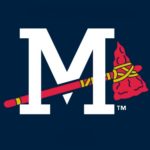 MISSISSIPPI BRAVES (CLASS AA)
MISSISSIPPI BRAVES (CLASS AA)
**TOP 50 PROSPECT** STARTER: Travis Demeritte
Demeritte had a Jekyll-and-Hyde-and-Jekyll season with Mississippi in 2017, coming out of the gate strong, going into a horrible two-month long slump, but coming back strong down the stretch. In the process he did lower his strikeout rate from 33% in 2016 to a much more reasonable (but still high) 26%. Demeritte is a plus defender at second base and an above average defender at third base, so he provides some positional versatility to a roster. A hot start to the 2018 season could see Demeritte move up quickly to Gwinnett, if he doesn’t start there.
BACK-UP (Promotion): Alay Lago
The Braves signed former Cuban National League infielder Lago late in 2016 after he posted a .255/.282/.349 line with Veracruz of the Mexican League. He surprisingly won the second base spot for the Fire Frogs out of spring training and even more surprisingly kept it all season in route to batting .303/.342/.413 and leading qualified Fire Frog batters in average and on-base percentage while also chipping in 6 home runs, good enough to be crowned the Florida State League batting champion. Lago will turn 27 during the summer and isn’t really a prospect, but he’s a feather in the cap for Braves amateur scouting and can fill in at second or third.
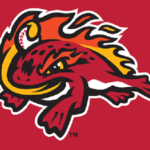
FLORIDA FIRE FROGS (CLASS A+)
STARTER: Kevin Josephina (Promotion)
After a solid 2016 campaign as a reserve infielder for Danville and Rome, Josephina was handed the keys to second base for Rome in 2017. The role exposed the Curaçao native’s extreme groundball tendencies, leading to a meager .247/.283/.312, 71 wRC+ offensive campaign. Josephina did turn in a solid defensive season, though when he did have defensive issues they tended to come in bunches. A fast baserunner, Josephina stole 21 bases in 2017 despite his on-base difficulties, but gave back 11 outs caught stealing.
BACK-UP : Jordan Rodgers (Promotion)
I have Rodgers projected as the starting third baseman for the Fire Frogs, but this infield situation is fluid. If Josephina doesn’t keep the hearts of Braves evaluators, Rodgers could slide to second base and Kevin Franklin, Kurt Hoekstra, or even Drew Lugbauer could man third base.
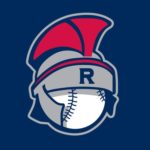
ROME BRAVES (CLASS A)
**TOP 50 PROSPECT** STARTER: Derian Cruz (Promotion)
Cruz began the 2017 season as the starting shortstop for Rome, but extremely poor play on both sides of the ball saw him quickly demoted to extended spring training. When Cruz resumed his season, he mostly played second base for Danville. With the sanctioning and emancipation of infield prospects like Livan Soto and Kevin Maitan, there is an opening for Cruz to move back to shortstop. Unfortunately he was such a disaster at the position that I believe the Braves will elect to keep him at second base where he seemed more comfortable, albeit still a work-in-progress.
BACK-UP: Nick Shumpert (Promotion)
A multi-positional talent like his father, 14-year major league vet Terry Shumpert, Nick could grab time anywhere in the Rome infield. The younger Shumpert has a good line-drive stroke, but severe contact issues that have severely hampered his offensive game in his two rookie league seasons. Other options here could include minor league free agent signees Nick King or Daniel Lockhart.
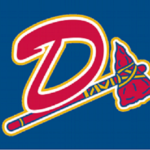 DANVILLE BRAVES (Rookie League)
DANVILLE BRAVES (Rookie League)
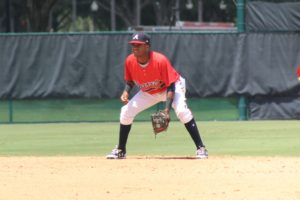
STARTER: Luis Ovando
Ovando had a solid if unspectacular pro debut in 2016, hitting .270/.335/.360 as a 17-year-old between the DSL and GCL Braves. He was a bit of a forgotten man in 2017, only getting 110 plate appearances in a second season with the GCL Braves while playing behind more highly-touted prospects. The good news for Ovando is that almost all of those other prospects are now with other teams. On the flipside, the organization will almost certainly look to restock some of that lost infield depth through the draft, and the chances of Ovando actually getting a majority of the playing time in Danville’s infield is remote. Ovando is somewhat undersized and still has body-control issues which doesn’t help his defensive play one iota.
BACK-UP: Jeremy Fernandez
If the odds of Ovando getting significant playing time is remote, Fernandez’s chances of even staying in the organization are even more remote. Fernandez will turn 21 over the summer and is entering his fourth season in the organization. His main contributing factor is his versatility, and he’s logged innings at all three infield skill positions plus left field. He also hit the first three dingers of his career after he was sent back to the GCL after an unimpressive two-week stint with Danville to start the season. A player who isn’t quite good enough to stick in the majors but is too good to be in AAA is often called a quad-A player. We need a name for a player too good for the complex leagues, but not good enough for the Appalachian Leagues. Or maybe not, since those guys don’t tend to stick around for long.
FINAL THOUGHTS: Either Albies or Swanson should capably man second base in 2018 and for years to come. For the first time since the days of Ramiro Pena knocking around the clubhouse, the Braves have a very good defensive back-up as well. In the minors, there’s a flawed but interesting second base option in the high minors. After that it’s a bit of a wasteland, and the Braves should be looking to bring in infield talent via the draft or trades to rebuild depth.
OFR TOP 5 SECOND BASE PROSPECT RANKINGS:
- Travis Demeritte
- Derian Cruz
- Luis Valenzuela
- Jordan Rodgers
- Alay Lago


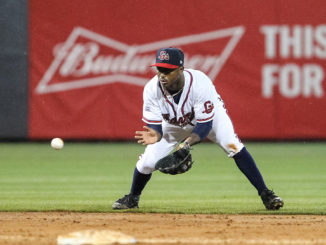
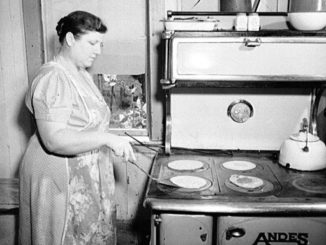
Leave a Reply